Search
Sat., December 14, 2013 • 3 pm, Emmanuel Church, Boston
Sun., December 15, 2013 • 3 pm, First Parish of Sudbury, UU
Marche pour les matelots Marin Marais (1656-1728)
from Marais’ opera Alcyone, adapted in 1860 as “Masters in this Hall” by William Morris
Joy to the world: St. Martins William Tans’ur (1706-1783)
from “The Grounds and Rules of Musick,” Thomas Walter, Boston, 1760
The English Village Choir Rejoices
Rejoice ye tenants of the earth William Gifford (fl. c.1805)
c. 1805, South Petherton, Somerset, England
Come let us all with heart and voice Anon. c. 1780, Herman French Collection
c.1780, Widecombe, Devon, England
Awake and join the cheerful choir Anon. c. 1825, Dorset County Museum MS
from George Hanford Book, 1830, Puddletown area, England
Tidings of Comfort and Joy
Rondo on God rest ye merry, gentlemen Samuel Wesley (1766-1837)
originally for piano solo; arranged for flute and strings by the ensemble
Of Angels and Shepherds
Hark! the herald angels sing Samuel Arnold (1740-1802)
from “The Massachusetts Compiler of Theoretical and Practical Elements of Sacred Vocal Music,” Boston, 1795
An Hymn for Christmas Day John Christopher Smith (1712-1795)
from “Church Music Reformed,” London, 1765
Hark, how all the welkin ring Lyra Davidica (1708); organ interludes by Starling Goodwin (c.1750-1790)
harmonization from “Harmonia sacra,” American edition, Andover, Mass, 1816
Intermission
American Originals
Glory to God on high Jeremiah Ingalls (1764-1838)
from “The Christian Harmony, or Songster’s Companion,” Exeter, NH, 1805
As shepherds in Jewry William Billings (1746-1800)
from “The Psalm-Singer’s Amusement,” Boston, 1781
A virgin unspotted
from “New England Psalm Singer,” Boston, 1770
Arise and hail the sacred day
from “The Continental Harmony,” Boston, 1794
Shepherds rejoice
from “The Psalm-Singer’s Amusement,” Boston, 1781
Of Humble Birth
Let an anthem of praise anon., compiled by Caleb Ashworth (1722-1795)
from “A Collection of Tunes,” London, 1763
Cradle Hymn possibly by John Frederick Lampe (c.1703-1751)
from “Harmonia sacra,” American edition, Andover, Mass, 1816
Shepherds, rejoice Isaac Lane (1766-1803)
Published in Boston, 1795
Repeat the Sounding Joy
Adeste fideles/O come, all ye faithful John Francis Wade (1711-1786)
from Douai MS, c. 1740, and The American Harmony, Philadelphia, 1801;
instrumental symphonies from “Sequel to Harmonia Sacra,” Dublin, 1850
Handel’s Water Piece G. F. Handel (1685-1759), arr. by Samuel Holyoke (1762-1820)
from “The Instrumental Assistant, vol. II) Exeter, NH, 1800
Joy to the World: Antioch “adapted from Handel” by Lowell Mason (1792-1872)
from “Occasional psalm and hymn tunes, selected and original,” Boston, 1837
Please join us in singing stanza 4.
Musicians of the Old Post Road
Suzanne Stumpf, traverso; Sarah Darling and Jesse Irons, violins
Daniel Ryan, cello and church bass; Michael Bahmann, organ
Schola Cantorum, Frederick Jodry, Director
Sopranos: Pauline Lim, Claire Raphaelson, Vicky Reichert
Altos: Megan Henderson, Alegra Martin
Tenors: Arthur Rawding, Michael Sansoni, Jason Wang
Basses: Frederick Jodry, Ari Nieh
flute by Martin Wenner, after Palanca
violins by anon. (possibly French) labeled Carlo Bergonzi, and Victor LeCavalle, c. 1850
cello by an anonymous Belgian maker, c. 1700; church bass by Abraham Prescott, Deerfield, NH, c. 1815
organ by John Bennett, after Baroque models
The Sudbury concert is co-presented by the Sudbury Historical Society and will be preceded by a brief talk by Lee Swanson, Curator of the Sudbury Historical Society and Town Historian.
Program Notes
This program presents a sampling of Christmas music from the mid-18th to the early-19th centuries from England and New England in the forms of hymn, fuging tune, anthem, and devotional song. Celebrations of Christmas had been suppressed in England and America in the 17th century. By the 18th century, this suppression was waning in England, while in New England, celebrations of the feast continued to be frowned upon well into the 19th century. Nevertheless, a gradual flowering of music to celebrate the feast occurred in the late 18th century on both sides of the Atlantic.
The texts and musical styles of Christmas hymns, anthems, and songs composed in England and New England during this period show stylistic similarities and noteworthy differences. In four-part choral writing, the melody was generally placed in the tenor, which was doubled at the octave by treble voices creating a rich five-part texture. In the country churches of England and America, organs were extremely rare—in England because of expense, and in Puritan New England because the use of instruments was generally forbidden. In English country churches, choirs were formed in an attempt to improve congregational singing. Situated in the churches’ west gallery, they came to be known as West Gallery choirs. A distinctive repertory evolved that soon included instruments such as violins, cello, bassoon, flute, and clarinet to support the voices and provide interludes or “symphonies” between verses of the anthems and psalms. The “West Gallery” tunes presented on this program show the lively and inventive musical styles of these rural composers, most of whom did not receive formal musical training. The use of dissonance and “incorrect” voice-leading, while decried by later reformers, is very much part of the charm and vitality of this style. By the mid-19th century, these choirs were beginning to be disbanded, in many cases forcibly replaced by harmoniums or barrel organs, a situation colorfully captured in the novels of Thomas Hardy, who came from a family of West Gallery musicians.
In New England, choirs were also formed to lead congregational singing, as well as offer anthems and other set-pieces. In the mid-18th century, several singing schools were established to educate amateur choristers. A major force behind the development of choral singing and composing was William Billings. A tanner by trade and a self-taught composer, Billings directed many singing schools in Massachusetts and published hundreds of hymns, fuging tunes, and anthems. Although his compositional style was very individual, his stylistic roots and method of composition resembled those of his rural English counterparts, including the practice of having sopranos double the tenor tune. Billings also extended this concept to include having tenors double the soprano part, creating an even richer six part texture. Billings’ writing shows an inventiveness and vitality unequaled by any of his American contemporaries.
Although the early New England Puritans generally forbade the use of instruments, by the late 18th century instruments were occasionally employed in order to support the singers. The most common of these was the church bass, an instrument slightly larger than a cello that provided a deep, firm tone. Treble instruments were also sometimes included in anthems to double the voices and to provide short “symphonies,” as is the case in the anthem “Shepherds, rejoice” by the Bedford, Massachusetts composer Isaac Lane.
When organs started to appear in New England churches at the end of the century, repertoire from England requiring their use began to be published in the region. The collection Harmonia sacra, first compiled and published in London by Thomas Butts in 1767, was reprinted in Andover, Mass. in 1816. This collection included hymns for choir and organ such as Hark how all the welkin ring, set to a tune now associated with Easter. Our performance follows the practice of using organ interludes between stanzas. Although generally improvised by organists, written-out examples of inter-stanza interludes were composed by the 18th-century English organist Starling Goodwin and are integrated into our performance of this hymn. The Harmonia sacra collection also includes solo and ensemble works probably intended for domestic, devotional use, including the beautiful Cradle Hymn and Samuel Arnold’s trio-sonata-textured Hark! the herald angels sing.
Purely instrumental music associated with Christmas was virtually non-existent in England during this period. In 1860 the poem Masters in this Hall was set to a dance movement from French Baroque composer Marin Marais’ opera Alcyone by William Morris, creating a memorable addition to the Christmas carol repertoire. These concerts open with Marais’ march in its original form.
The English organist and composer Samuel Wesley wrote no sacred Christmas music, but did compose a piano work based on the traditional carol God rest ye merry, gentlemen. Inspired by Wesley’s colorful variations and counterpoint, we have transcribed this work for flute quartet to bring out its interesting attributes. The work, in rondo form, shows Wesley’s expressive, early romantic style as well as his musical erudition. The tune appears in canon in several sections of this work, including a canon in augmentation where, in our instrumentation, the cello plays the tune at half the speed of the violin.
Samuel Holyoke was a prolific composer and compiler of sacred and secular music. A native of Boxford Massachusetts, he was active in northern Massachusetts and southern New Hampshire, publishing copious tune books and instrumental works, including the two-volume Instrumental Assistant published in Exeter, New Hampshire. This collection offered basic instruction on violin, flute, clarinet, oboe, and cello and was probably intended for learners who lived in rural areas and lacked a teacher. Among the instrumental works in Volume 1 is an arrangement of a movement from Handel’s Water Music. We have incorporated this work to serve as a prelude to Lowell Mason’s Joy to the World, one of the most beloved American Christmas carols.
Born in Medfield, Massachusetts, Mason is considered the father of American school music education. A co-founder of the Boston Academy of Music, he introduced music education to the Boston public schools and his methods of teaching and teacher training were highly influential. Also prominent as a church musician and choral conductor, Mason sought to improve and reform choral singing, eschewing the “old-fashioned” anthems and fuging tunes of the Yankee tunesmiths in favor of the expressive ideals of Romanticism. This romantic espressivity can be seen in many of his hymn tunes that are still popular today such as “Hamburg” (When I survey the wondrous cross) and “Bethany” (Nearer my God to thee). His most well-known tune is “Antioch” (Joy to the World), which, ironically he adapted not directly from Handel, as is stated in his subtitle, but from various English hymnal sources. Mason’s felicitous uniting of this tune with the ”Joy to the world” text has led to its continued popularity to this day. The setting performed at these concerts is Mason’s earliest printed version which retains the old-fashioned tenor-tune voicing, linking its aesthetic with the earlier New England composers.
— © Daniel Ryan and Suzanne Stumpf
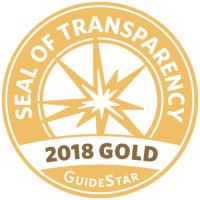


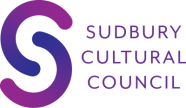
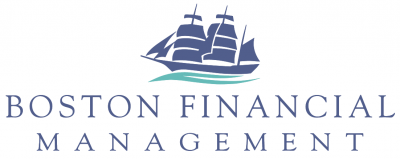
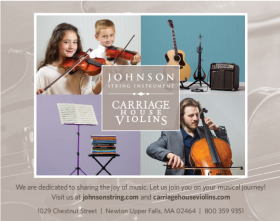

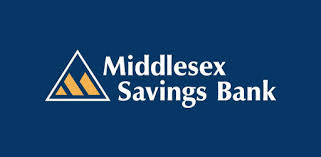
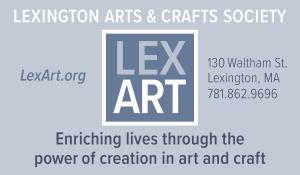
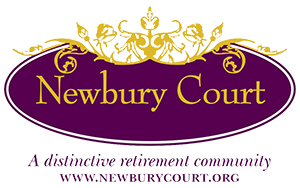
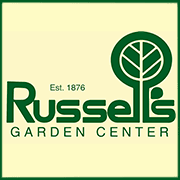
Daniel Ryan and Suzanne Stumpf, Artistic Directors
349 Boston Post Road, Weston, MA 02493
tel. (781) 466-6694
All content © Musicians of the Old Post Road
Privacy Policy
Terms & Conditions
